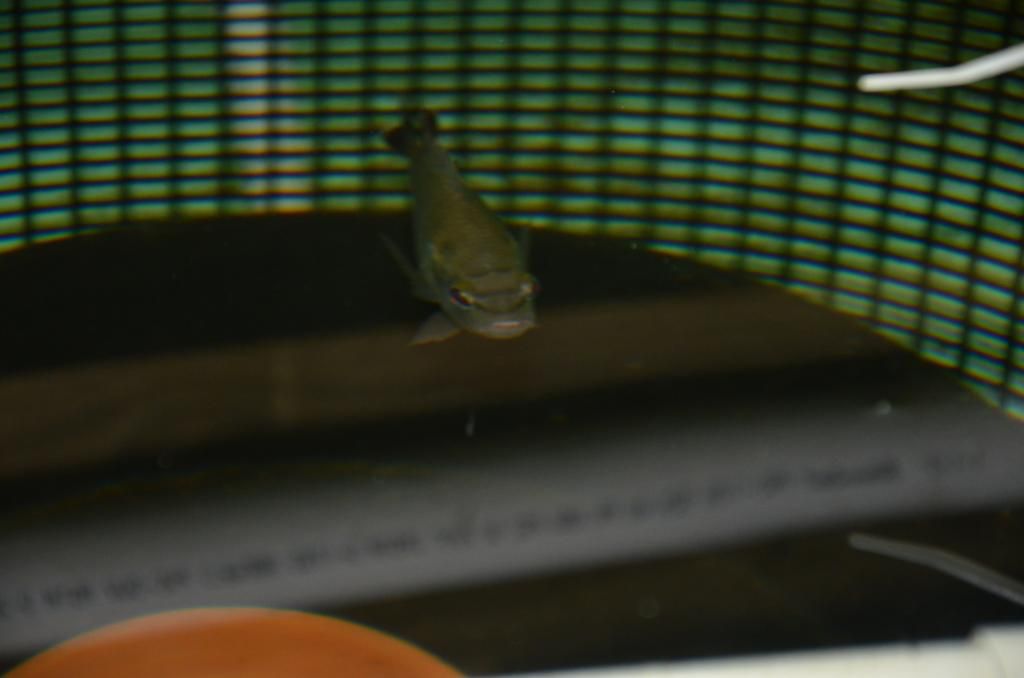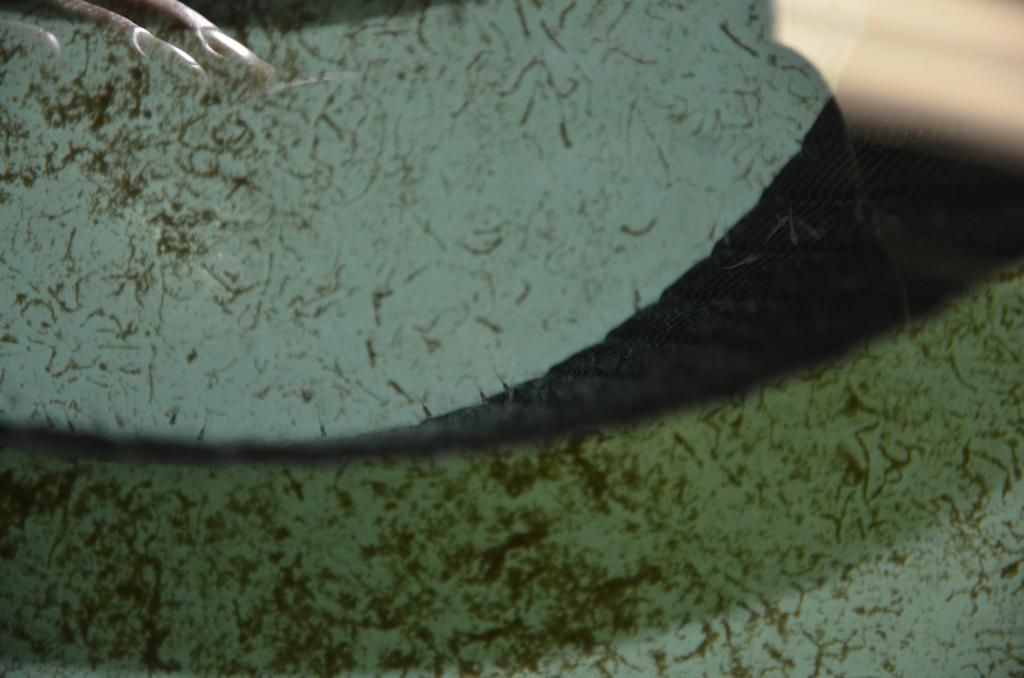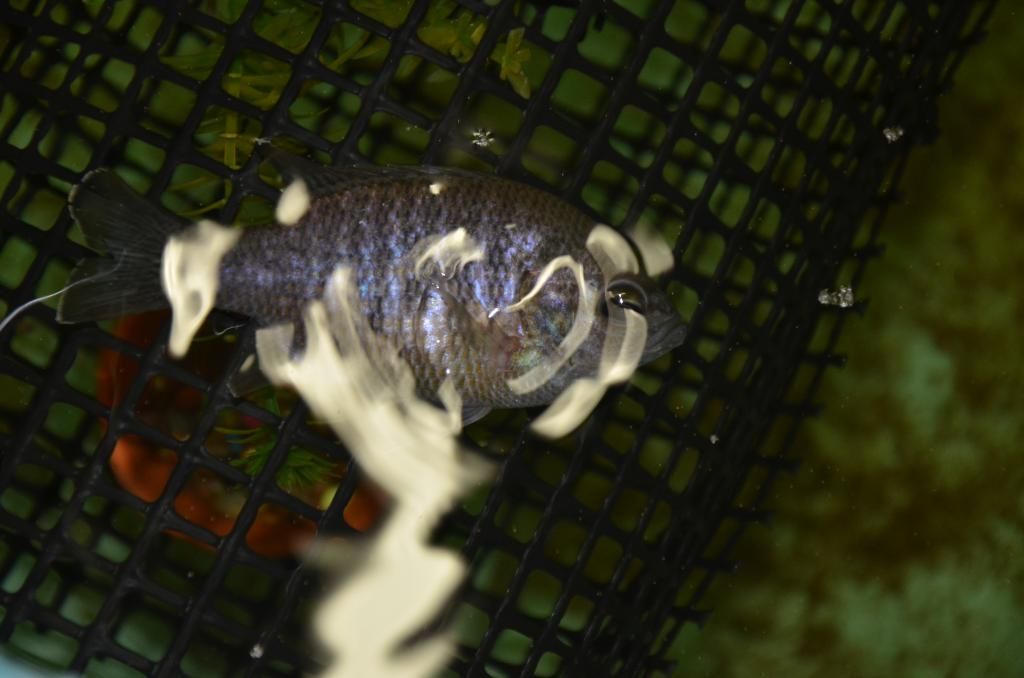Suggestions request for reporting interesting larval behavior?
#1
 Guest_centrarchid_*
Guest_centrarchid_*
Posted 28 October 2014 - 09:33 AM
#2
 Guest_centrarchid_*
Guest_centrarchid_*
Posted 28 October 2014 - 04:02 PM
#3
 Guest_centrarchid_*
Guest_centrarchid_*
Posted 28 October 2014 - 07:37 PM
First shows father about 18" above nest roughly 6" below surface. His coloration is not courtship coloration and he will attack other fish and me. You can just make out a larva just in front of him slightly to right. Few of the larvae swim in the open. This is about day post-exodus / swimmup.

Second image showls larvae picking on a substrate for edibles growing.

#4
 Guest_centrarchid_*
Guest_centrarchid_*
Posted 29 October 2014 - 10:24 AM
#6
 Guest_gerald_*
Guest_gerald_*
Posted 30 October 2014 - 11:23 AM
#7
 Guest_centrarchid_*
Guest_centrarchid_*
Posted 30 October 2014 - 01:15 PM
Has anyone seen how males of the rockbass group behave around brood once they leave the nest?
#8
 Guest_Skipjack_*
Guest_Skipjack_*
Posted 30 October 2014 - 03:49 PM
#9
 Guest_UncleWillie_*
Guest_UncleWillie_*
Posted 30 October 2014 - 04:01 PM
#11
 Guest_centrarchid_*
Guest_centrarchid_*
Posted 30 October 2014 - 07:00 PM
The part that interests me deals with Lepomis where one, possibly two species, are intermediate between the Bluegill and black bass approaches. Both species are also very easy to culture in tanks but also do not do well where streams have been channelized.
For me this is a bigger pattern starting to come together that helps me understand how Centrarchids vary with respect to our modifications to their environments.
Skipjack, just call me Sally.
#13
 Guest_centrarchid_*
Guest_centrarchid_*
Posted 31 October 2014 - 03:31 PM
#14
 Guest_Skipjack_*
Guest_Skipjack_*
Posted 31 October 2014 - 05:52 PM
Could also mean a reduction in the abundance of submerged vegetation.
I guess that varies by area. Some of our channelized streams have a lot of submerged vegetation. More than many of our natural streams. Seems that the fast flowing cooler water favors some of these plants. Not that this means anything to your research. Interestingly even many non aquatic plants grow year round submerged in these swift flowing ground water fed streams.
Do you feel that these species require the ability to feed off of substrate? Is that why they do poorly in streams that inhibit their ability to do so?
#15
 Guest_centrarchid_*
Guest_centrarchid_*
Posted 01 November 2014 - 07:22 AM
They do not require the ability to go eat off bottom but it might be either a safer or more consistent method of feeding. I am thing the instream locations are like reefs where eats are likely concentrated by interaction of flow and structure provide by plants.
#16
 Guest_centrarchid_*
Guest_centrarchid_*
Posted 13 November 2014 - 11:49 AM
#17

Posted 25 November 2014 - 09:13 PM
#18

Posted 03 December 2014 - 01:02 PM

This thread may need to be moved since now devolving into simple observations.
#19

Posted 03 December 2014 - 03:58 PM
Is there a reason for this secrecy?
Gerald Pottern
-----------------------
Hangin' on the Neuse
"Taxonomy is the diaper used to organize the mess of evolution into discrete packages" - M.Sandel
Reply to this topic
1 user(s) are reading this topic
0 members, 1 guests, 0 anonymous users









